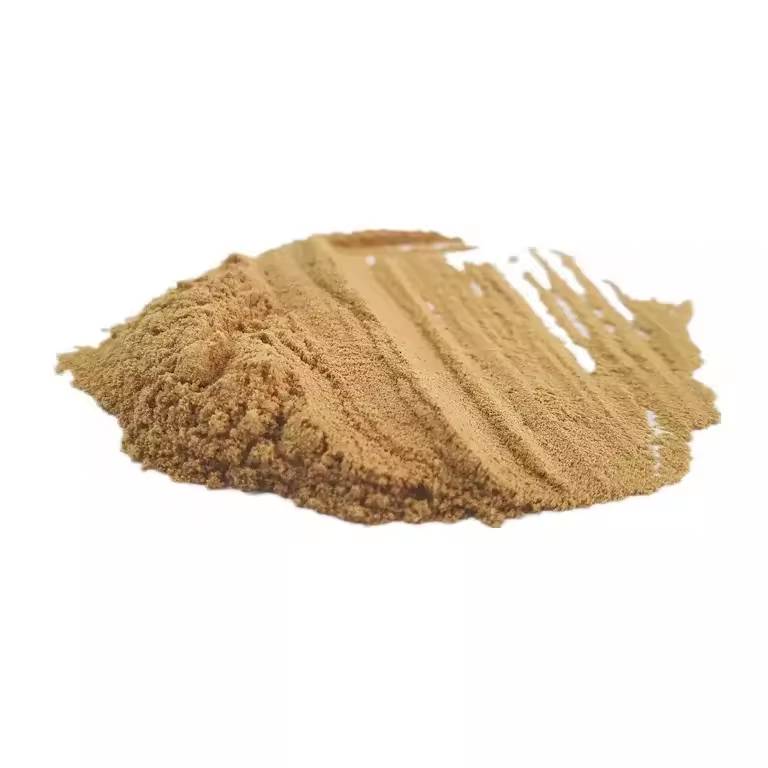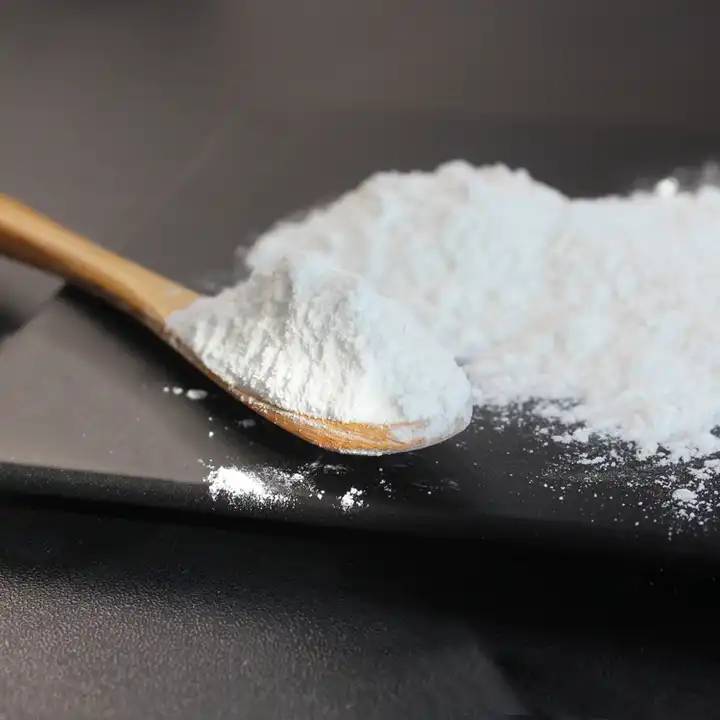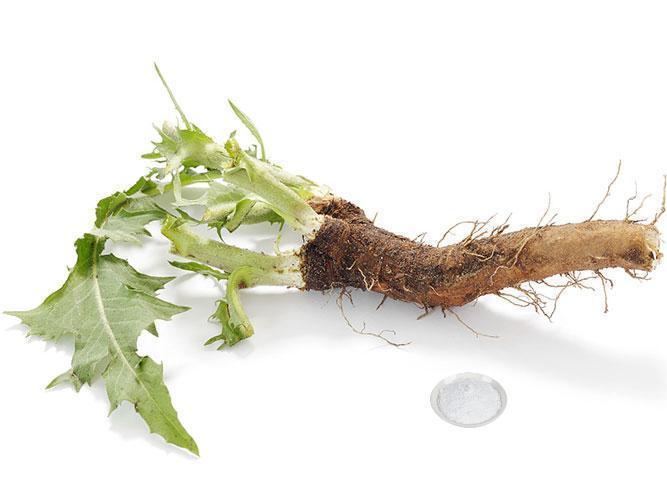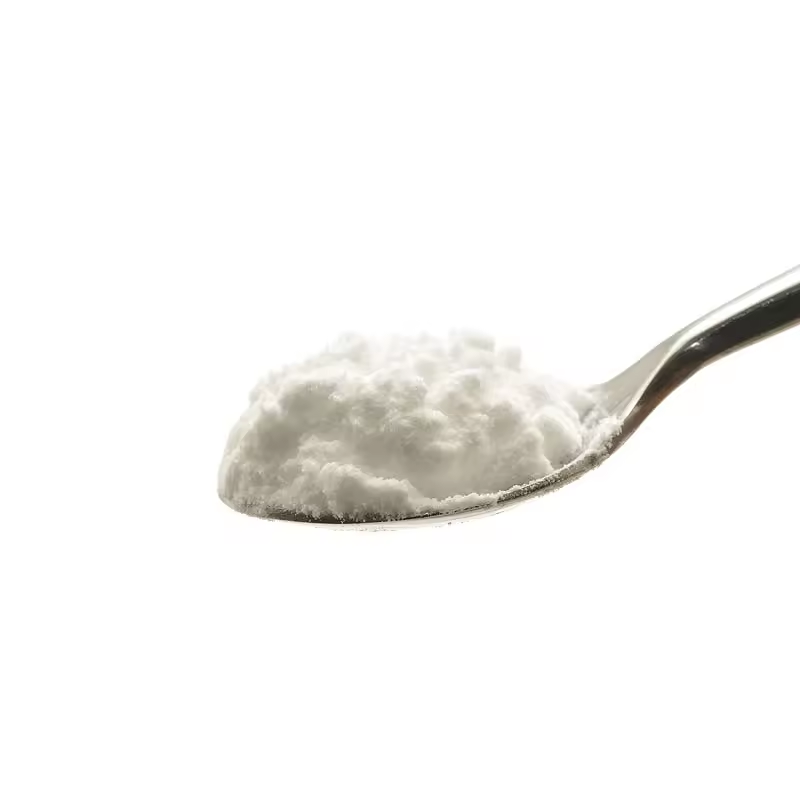Polydextrose Powder 90%
Assay:90%
Testing Method:HPLC
Appearance:White Fine Powder
Pesticide Residue:Comply with (EC) No 396/2005 Standard
- Description
- Data Sheet
- Certificate
-
What is Polydextrose Powder?
Polydextrose is a kind of water-soluble dietary fiber, which is a kind of D-glucose polymer made from glucose, sorbitol, and citric acid, which is blended and heated into a molten mixture in a specific proportion, and then condensed by vacuum. It is a special carbohydrate with low calorie, no sugar, low glycaemic index, stable and highly tolerable with prebiotic characteristics. Its physiological properties such as adjusting the micro-ecological environment of the gastrointestinal tract, laxatives, preventing intestinal diseases, etc. enable it to be widely used in various food products, especially in functional food with low energy and high fiber.
Green Spring Technology supplies Polydextrose Powder 90%, which has a neutral, refreshing flavor and a solubility of up to 80%. The polydextrose powder has good stability and does not show hydrolysis over a wide pH range and at various processing temperatures and conditions. This property makes it an ideal ingredient for many beverages without compromising on taste, color, and cellulose content.
Green Spring Technology is a leading biotechnology company in China, dedicated to the research and development of supplying high-quality plant extracts. It was established in 2000 and has obtained many certifications such as Halal, Kosher, COSMOS, BRC, IFS, FDA, ISO, and so on. Green Spring has a rigorous quality control process and organizes production under ISO, HACCP, and other quality standards. The products implement the highest international industry standards, complying with EU EC396, EU 2023/915, and the highest solvent residue standards.
Specification:
Product Name
Polydextrose Powder
Assay
90%
Testing Method
HPLC
Appearance
White Fine Powder
Pesticide Residue
Comply with (EC) No 396/2005 Standard
Regulation:
It conforms to EU regulations.
Looking for a Quotation?Benefits:
Low Energy
Polydextrose is a product of random polymerization, with many kinds of glycosidic bonds and complex molecular structure, which is difficult to digest and utilized by the human body or animals, so it has low calorific value. A large number of animal or human experiments have confirmed that polydextrose has a low-calorie value, about 1 kcal/g. Feeding 14 C-labelled polydextrose to rats proved that about 60-70% of polydextrose was not converted into usable energy, and about 30% could be converted into usable energy.
Bowel Regulation
Polydextrose improves bowel function without adverse effects such as bloating and diarrhoea. It helps to increase the number of beneficial bacteria in the intestinal tract, reduce the number of harmful bacteria and lower the pH value of the stool. It can reduce the absorption of glucose in the small intestine and ferment in the large intestine after ingestion to produce short-chain fatty acids such as butyric acid, isobutyric acid and acetic acid. Polydextrose at concentrations of 1% and 2% can have a significant stimulatory effect on intestinal bifidobacteria. It acts on a wide range of bifidobacteria, in addition to proliferating Bifidobacterium adolescentum, Bifidobacterium bifidum, Bifidobacterium longum, etc., it also has a proliferative effect on Bifidobacterium infantis.
Cholesterol Reduction
Polydextrose can prevent or reduce triglycerides and cholesterol in the lymphatic vessels. At the same time, polydextrose can inhibit the synthesis of cholesterol and adsorb the metabolite of cholesterol, bile acid, which can be excreted from the body, thus lowering the content of cholesterol in the body, hindering the absorption of cholesterol, and also preventing the formation of gallstones. Chocolate made from polydextrose has an obvious effect of reducing serum triglycerides. This effect is even stronger when used in combination with lactitol.
Increase Satiety
Polydextrose has a low calorific value and has the effect of increasing satiety with a low calorie intake. On the one hand, low-calorie foods produced with polydextrose can increase satiety, thus preventing the consumer from feeling hungry for a long time. Polydextrose also suppresses the appetite, reduces the amount of food eaten, and removes excess fat and energy from the body. On the other hand, polydextrose can also form a film on the gastrointestinal wall, wrapping part of the fat in the food, restricting the absorption of fat in the digestive tract, and promoting the excretion of lipids, to achieve the efficacy of reducing the accumulation of fat and controlling body weight.
Promote Mineral Absorption
A study in The Journal of Nutrition revealed for the first time that calcium absorption in the jejunum, ileum, cecum, and large intestine of mice showed an increasing trend as the concentration of polydextrose increased from 0-100 mmol/L. The study also showed that calcium absorption in the jejunum, ileum, cecum, and large intestine of mice increased with increasing concentrations of polydextrose. The addition of polydextrose to the diet promotes intestinal calcium absorption, probably because polydextrose is fermented in the intestine to produce short-chain fatty acids that acidify the intestinal environment, and the acidified environment increases calcium absorption.
Applications:
In the Food Field:
Polydextrose powder has the function of low calorie, sugar substitute, and fat substitute, which has become a new type of functional food additive used in foreign countries. In food industry production, it is used as a fat substitute, high-quality sugar substitute filling brake, antifreeze, moisture retention agent, and water-soluble dietary fiber source. Polydextrose has been confirmed as a safe and non-toxic food additive and is widely used in sugar, jam, pastry, chocolate, frozen desserts, and other food production industries.
Beverages
Polydextrose powder is an ideal fiber source for fibre-fortified beverages. It provides texture, improves mouthfeel, and produces completely clear and transparent beverages without causing gelling.
Dairy Products
Polydextrose powder is used in low-fat non-fat products to prevent water precipitation and to give a good texture and creamy mouthfeel. It is stable at low pH and can be used in yoghurt to provide a refreshing taste and fibre fortification and in milk beverages for direct fibre fortification.
Bakery Products
Polydextrose is very heat resistant and offers an ideal combination of excellent properties in bakery production. As a substitute for sucrose and fats, polydextrose powder delays starch aging retains moisture, provides good texture and mouthfeel, and is particularly suited to the processing of low-sugar, low-fat bakery products.
Confectionery
Polydextrose is a good ingredient for sugar-free confectionery, it is well tolerated and has high water solubility and high viscosity, which ensures good chewing of hard and gummy candies. Sucrose confectionery with added polydextrose can be fortified with fiber and reduced sucrose, as well as lowering calories or lowering total glucose production values.
Chocolate
Polydextrose replaces sucrose in chocolate, adding a creamy texture without the coolness and colouration associated with sugar alcohols.
Ice Cream
Polydextrose is highly viscous and has a moderate freezing point-lowering effect. It replaces sugar and fats and gives the necessary volume to the product. It has no adverse effect on its organization as it is similar to sucrose in terms of its water-holding capacity, inhibition of ice crystal formation, hydration texture, and bulking properties.
Jams
Polydextrose is highly soluble and viscous, resulting in a reduction of heat and sugar in jams and fillings. It is used in trapping to reduce the migration of moisture from the trapping to the dough or pastry, extending its shelf life.
Meat Products
Polydextrose has excellent water retention, oil retention and gelation properties and is added to meat products for freshness, softness and richness of flavor.
-
Download
Polydextrose Powder 90% COA


 English
English French
French Spanish
Spanish Russian
Russian Korean
Korean Japanese
Japanese












